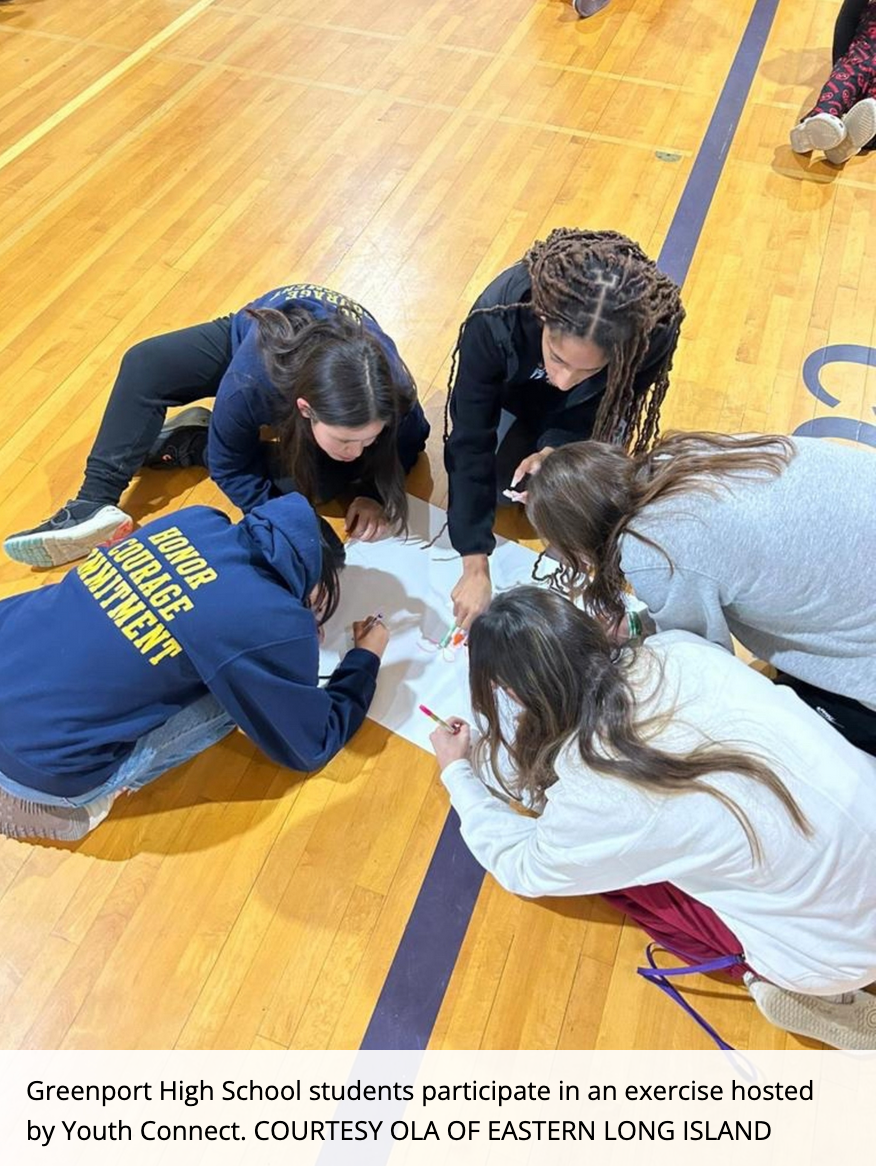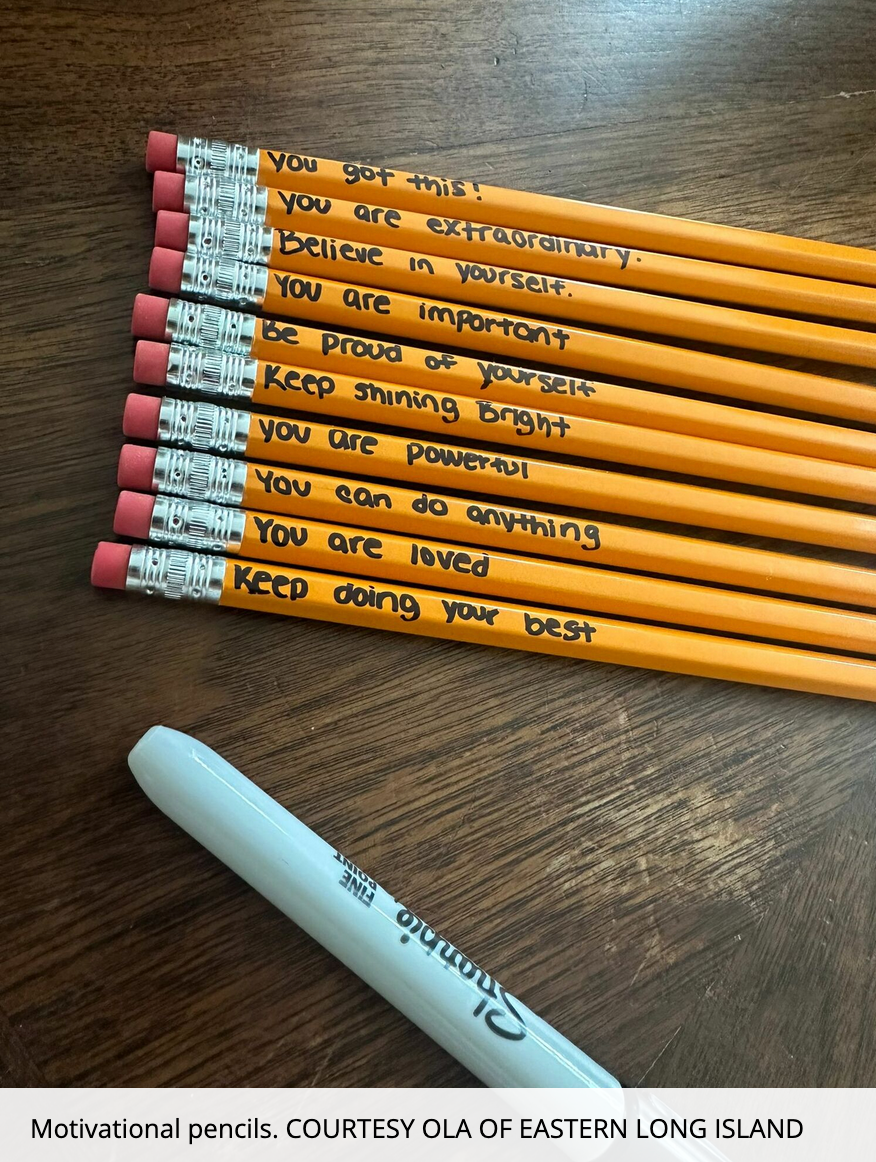Youth Connect Marks One Year of Helping Teens, Sees ‘Exponential’ Growth
- Michelle Trauring
- Nov 29, 2023
- 5 min read
Michelle Trauring

Across the East End, some teens are living silent stories.
In their world, they are stressed about grades, a breakup, a fight with their parent, or keeping a roof over their heads. Some miss their family, separated by geographical distance — Mexico, Colombia, Ecuador and beyond — or the sudden death of a loved one.
Some struggle with an eating disorder. Some have experienced sexual assault. Some want to “smoke away” the pain. Some contemplate suicide.
These stories represent a cross-section of the calls fielded by the team behind Youth Connect, a bilingual prevention-focused crisis counseling program and helpline created by the nonprofit advocacy group Organización Latino Americana of Eastern Long Island.
No two calls are the same, but common themes emerge, explained OLA’s executive director, Minerva Perez — and one of them is that these children have needed someone to hear them and help, and continue to.
“It’s working,” she said, “and growing, very, very quickly.”
For the past year, Youth Connect staff have visited nine of the 24 East End school districts — including East Hampton, Bridgehampton, Greenport, Riverhead and others — to speak with middle and high school students and lead group activities.
To date, they have engaged with over 3,750 students, classroom by classroom, and aim to eventually be in all 24 districts — helping all children, Perez emphasized. Youth Connect is a program for every East End child, she said, Latino and non-Latino alike.

“OLA is bringing solutions to something that is not a Latino issue,” she said. “This is a community issue, and this is countrywide issue. It’s definitely looking at the needs of all youth, because we could not, with any good conscience, say we’re going to meet the needs of Latino youth who are struggling and nobody else.”
The complimentary helpline — which is anonymous and confidential, answered by trained crisis counselors in English and Spanish from 9 a.m. to 11 p.m. daily — officially launched in January, but it wasn’t until the first few school visits that calls and texts started coming in, according to Youth Connect team leader Adriana Cardona.
“Now, we’re very busy,” she said. “The helpline is very busy right now, where we see interactions even on a daily basis — maybe not the whole day, but at least one, two, three people daily.”
Perez describes the growth as “exponential.” By its one-year milestone, she estimates that the helpline will have logged at least 200 calls and text exchanges; it currently sits at 129, she said. Over the last five months alone, the number of texts has tripled, she said, and doubled in terms of Spanish-language texts.

“The real uptick in Spanish-language texts is showing us that word of mouth and a level of trust and the fact that we’re sticking to it is really what is growing here,” she said, “so that the students who feel that they’re not supposed to talk about anything to anyone, they’re the ones that are reaching out.”
In part, OLA created Youth Connect after its involvement with Project Hope, a New York State-based program that provided counseling and support services for families and individuals during the height of the COVID crisis — work that Perez described as meaningful, important and, in some cases, lifesaving.
Around that time, with the help of Stony Brook University, the nonprofit also commissioned a mental health survey for youth in the area, asking them about their experiences as middle and high school students, the challenges they faced, and what would help them.
Young people made it clear they were seeking better and more accessible mental health care support — and shared what stood in their way when it came to accessing it. The organization then used that feedback to develop Youth Connect, Perez said.
“We crafted this,” she said. “This is not something that we got from anywhere. I sat down and said, ‘What do we need based on that survey? What can it look like and what can keep our feet to the fire and keep us true and keep us listening to youth?’”
Getting in front of the students, in person, is a huge factor, said Cardona, who is routinely approached by students who have used the helpline, or know someone who has, when she returns to schools she previously visited.
“It’s gratifying, because they come up and they’re, like, ‘Oh my God, I remember you, and I’m so happy you’re here,’” she said.

Born in Colombia and raised in Montauk, Cardona said she sees what teens are going through, both inside her own home in East Hampton — where she is raising two teenagers — and while fielding calls on the helpline.
“Something that really always sticks with me for a little while is when kids mention their family situation is really bad, or they don’t have anyone they can talk to in their house, and that always affects me, because I’m, like, ‘I wish I could be there and I wish I could talk to them,’ because that’s what I try to do in my house, at least most of the time,” she said. “It’s just a little heartbreaking when they say, ‘Oh, I can’t talk to my mom, I can’t talk to my dad,’ or ‘My mom says these mean things to me,’ or ‘There’s divorce and they talk bad about each other.’ Those kinds of things are always hard for me to deal with.”
While Cardona can’t be there in person, she, or one of eight other counselors, is just a phone call or text away, she assured, and it is only a matter of time before Youth Connect expands to other districts and more distant communities. It’s a scalable model, she said, and her dream is to teach them how they did it.

But no matter how it grows, the program will remain student-centered, Perez said.
“We need to make sure that on the East End of Long Island, at the very least, that we are honest about what we’re able to do and honest about what we’re not able to do, and that’s not happening right now,” she said. “We’ve got a lot of gaslighting that’s going on, of not just our Latino community. Our entire youth community is being gaslighted right now, because it’s being stated that we’re covering everything that we need to cover — that schools have it — and we’re hearing too much of that.
“Some schools are being more honest than other schools, but we can’t afford to do it anymore,” she continued. “We can’t lose any life. We can’t do it.” Source: https://www.27east.com/sag-harbor-express/youth-connect-marks-one-year-of-helping-teens-sees-exponential-growth-2218847/




Comments